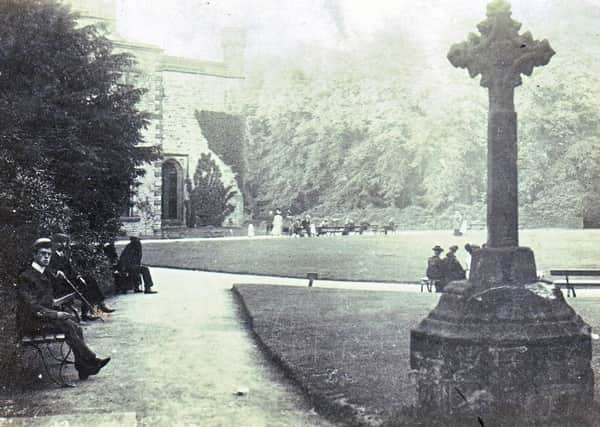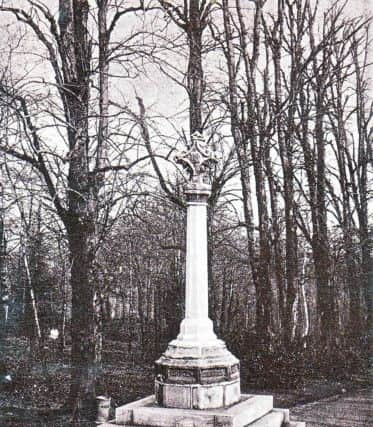The story behind Towneley Park’s Foldys Cross


However, before the story of the Cross is told, I want to address the name by which it is known.
Whatever you might think, there was never anyone, at least in Burnley, named Foldys, or Foldy’s, for that matter. The “y” in the name is probably an apostrophe. The name of the individual remembered by the cross was John del Folds, one of the chantry priests who served at St Peter’s Church, Burnley. We do not know when he was born but we do know he died in 1520 and it is likely he was a member of the Folds’ family of Daneshouse, Burnley.
Advertisement
Hide AdAdvertisement
Hide AdThe Folds were not quite of the gentry class. We would probably call them yeoman farmers, owning some of the land they farmed but, perhaps, renting other property, possibly from the church. There was a lot of church-owned land in Burnley of pre-Reformation days and some was close to Daneshouse itself which was located in what is now Thursby Gardens, next to the Prestige building in Colne Road.


I have never attempted a family tree of the Burnley Folds family which might be complicated as there were Folds in Briercliffe, Trawden and Colne. Most descendants, these days, are not known by the spellings I have so far given. There are still those who spell their surname as Fold, or Folds, but the name has generally come down to us as Foulds, of which there have been many in Burnley.
One of the most well-known of the Foulds family were the cotton manufacturers and spinners Obadiah and James Foulds, who sometimes used the “Folds” version of their name. They operated the Rishton and Trafalgar Street Mills, the former was adjacent to the Culvert in Yorkshire Street.
The name itself is first recorded in Wakefield in 1275 as “del Foldis” and, as Adam “in le Fold”, in 1327. There is also a John “atte Fold” at the same time and the name means “worker at the fold(s) or cattle-pens”.
Advertisement
Hide AdAdvertisement
Hide AdIt is derived from the Old English falod, later fald and the Middle English fold. So the name, despite the addition of del and le, which are derived from Norman French, the name is one of the most English of surnames.
Some words inscribed on the cross in Towneley Park tell us much about what was its purpose. They read: “Pray for the soul of John Foldys, chaplain, who caused this cross to be made in the year of Our Lord, 1520”. John Foldys was, therefore, a Catholic priest working at St Peter’s and the cross probably marked his grave.
It has been suggested, however, the cross might have had other purposes, that it might, for instance, have been intended to be a market cross. This is, of course, possible and it is likely any cross in a churchyard close to a market place might be used for the making of deals by market traders and their customers.
However, we do know that, from 1520 to 1789, the cross was situated in St Peter’s churchyard. It was removed from there, in the latter year, by Charles Towneley of Towneley, the Classical Antiquarian, and Dr Thomas Dunham Whitaker, the historian, when there was an incident in the churchyard.
Advertisement
Hide AdAdvertisement
Hide AdThere is not complete agreement about what happened but the cross was damaged. It may have been that youths, who had spent too much time in the Sparrow Hawk Inn, across the road from St Peter’s, were responsible. T.T. Wilkinson, one of Burnley’s historians of the 19th Century, was of the opinion the cross was destroyed as a consequence of a wager, but Dr Whitaker thought a Puritanical mob was responsible.
Whatever the reason, the Foldys Cross, to use the name by which it is known today, has been at Towneley since 1789.
It was restored at that time, and again by Burnley Council in 1909-10.
In 2009 the cross was cleaned and restored, once again by the council, as part of a very successful Heritage Lottery Fund scheme.
The Cross is one of the features of Towneley.
If it is, as I believe, the marker of John del Folds’ grave it is one of the oldest gravestones, intended for outside use, to have survived in the North-west of England.